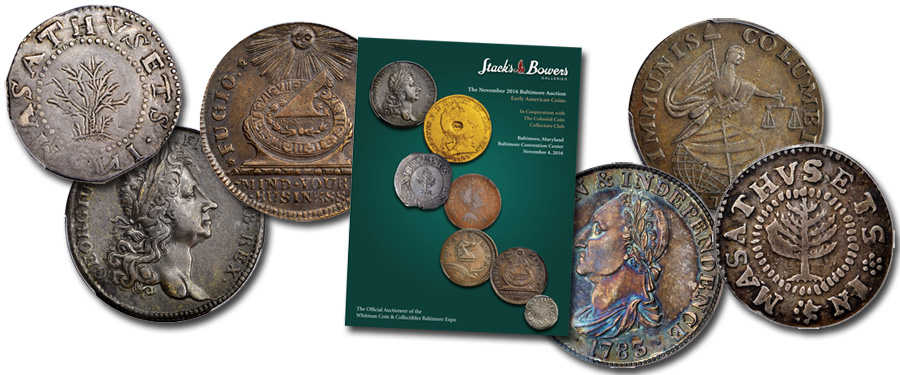
The Carolina Collection will be featured in our Early American Coins auction session held in conjunction with the Colonial Coin Collectors Club. The session begins Friday evening at 4:00 PM ET, on November 4, 2016, in Room 308. The auction is now online for viewing and bidding. We hope you enjoy this biography of the collector.
I began collecting coins when I was 22 years old. I was attending law school in Washington, D.C., and working part time as a teller at a bank in Silver Spring, Maryland. The other tellers told me to “pull the silver coins, they’re worth more.” I learned that the U.S. Mint had stopped producing silver dimes and quarters after 1964, and had reduced the silver content of half dollars.
I began to notice the different designs on coinage. Back then you could find Franklin halves in circulation as well as the occasional Indian cent, Buffalo nickel, Mercury dime and even a Standing Liberty quarter.
I visited a local coin shop, Bonanza Coins, in Silver Spring, in early 1969. Then it was owned by Al Bonan, who was willing to spend time talking coins with this novice. I bought my first “Red Book” from Al, and became attracted to the classic commemorative series with its diverse designs.
After graduating from law school I returned home to New Jersey, got married, had children, and got involved with the practice of law. Coins were a secondary interest until late November 1992, when I attended a one-day coin show in Parsippany, New Jersey. It was there that I observed, for the first time, coins that had been graded and encapsulated in plastic. Wow, I thought, this is interesting.
At this point I became a serious collector. I went to more coin shows, including the fall and spring expos in Baltimore, and began attending the Stack’s and Bowers & Merena auctions in New York City. My initial collecting interest was classic commemoratives, then U.S. type coins.
In 1994, I read an article in the Newark Star Ledger about a discovery coin, a New Jersey copper that had the initials, W.M. engraved below the horse head. The initials were apparently that of the coiner, Walter Mould. I learned, for the first time, that three mints had been producing copper coins in New Jersey during the colonial period. They were located in Elizabeth, Rahway and Morristown. I had grown up near Elizabeth and Rahway and was working professionally in Morristown.
By chance, I met John Higgins, the dealer who had discovered the “Mould” coin, at the Garden State coin show that spring. There, he was displaying the discovery coin in a large lucite holder. He gave me some background on the coins of New Jersey, discussed the Maris book on the subject, and directed me to a dealer who was selling 1987 reprints of the book. It became my first colonial purchase.
In June of 1994, I attended the Stack’s Alfred R. Globus sale in New York City. I really had no intention of bidding on any colonial coins at the sale, but lot 239 was a New Jersey copper, M.38-y, in fine condition. The auctioneer was Harvey Stack. The coin opened at $65 and Harvey asked for $70. There was silence. He said: “Won’t anyone bid 70 dollars?” I raised my hand, and bought my first colonial coin.
Over the years I have tried to put together a “Red Book” type set of colonials. I understand that there are people who seek 100 different varieties of New Jersey or Connecticut coppers, but that was not for me. In 1996 I became a member of the Colonial Coin Collectors Club. Through the club I have made many friends and have gained a wealth of knowledge. I have learned to appreciate the provenance of a coin, which sometimes is as important as or even more important than the coin itself.
Twenty-two years have passed and it is time to let go of what I have accumulated. It has been a wonderful journey and I hope the recipients of these treasures will enjoy them as much as I have.





